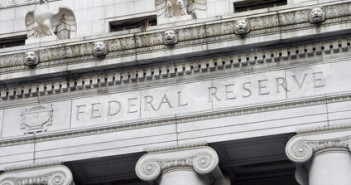While the conclusion of the FOMC’s two-day policy meeting and the decision to continue with a steady taper of $10bn in monthly asset purchases was met with little reaction from financial markets, it was Ms. Yellen’s accompanying press conference that generated substantial fanfare. Despite the members of the FOMC becoming slightly more hawkish on interest rate levels than we saw in the Summary of Economic Projections back in March (the average Fed fund rate dots at the end of 2015 moved up to 1.125% vs. 1% in March), market participants instead focused on Yellen’s “steady-as-she-goes†mentality, as she opined economic activity had rebounded in recent months and the current up-tick in inflation was a result of a stabilization in prices and not an indication prices were poised to spike higher. Heading into the announcement there were some concerns that if inflation expectations were rising but growth forecasts remained sluggish, the Fed might be cornered into a position where they would have to raise rates earlier than anticipated, before the economy would be able to cope with higher borrowing costs. To that extent, financial markets were cautious there was the possibility Yellen would take a page from Mark Carney’s hymn book, and try to remove some of the froth from markets by reeling in rate hike expectations. The re-assurance from Yellen that interest rates could stay below normal for a sustained length of time even if inflation and employment levels moved in-line with the Fed’s mandate helped affirm the pro-growth bias of the Fed, and provoked investors to increase exposure to high-yield asset classes. The US treasury curve saw a notable flattening as investors piled into the longer-term tenors, while the S&P surged by 0.77% to close at record highs, and the DXY slumped below 80.5. After it was clear there would be no surprises from Yellen at yesterday’s press conference, protection was unwound at a rapid pace, with the cash VIX contract dropping by 1.45 vols to settle at 10.61% (a 12% drop on the day.)
The optimistic mood on Wall Street permeated into the Asian session, where the Nikkei followed suit with the risk-on rally and closed higher by 1.62%. Chinese stocks were a notable laggard on the day, with the Shanghai Comp falling by 1.55% after Premier Li hinted that any further economic stimulus would be limited on the basis that a hard landing will be avoided. After piercing the 102 handle to the downside, USDJPY was not able to recoup its losses overnight, with USD weakness continuing to weigh on the pair.
European trade is progressing along the same themes witnessed in Asia, with follow-through from the Fed pushing the major equity indices well into the green midway through their session. Despite soggy retail sales in the UK which saw consumer spending slide for the first time in four months, GBPUSD is finding traction above the 1.70 handle, taking advantage of a continued collapse in the DXY overnight. On a y/o/y basis both the headline and core readings saw their pace of increase slow by more than expected, though both still registered fairly robust gains at 3.9% and 4.7% respectively, highlighting the still stable ground the economy is perched on. The print was insulated somewhat by the lead-in to the World Cup, as sales at sports stores for replica jerseys helped make-up for the decline in food sales.
A lack of data from the Eurozone did not stop the common-currency bloc from also appreciating further against the USD overnight, with the break of the 200-day moving average in the DXY inciting further unwinding of long-USD positions. EURUSD broke through the 1.36 handle to the upside, precariously close to levels that could spark a short squeeze in positions implemented post-ECB announcement.
As we get set for the North American open, there is little on the economic calendar that will likely alter market behaviour after Yellen’s press conference yesterday. S&P futures have taken a breather after yesterday’s rally, but are dipping their toe into positive territory ahead of the opening bell. The hydrocarbon complex continues its march higher as the Iraqi government and ISIS militants battle for control of the largest refinery in Iraq, pushing futures of WTI and Brent above $106/barrel and $114/barrel respectively. Jobless claims for the American economy edged lower from last week, but came in pretty much bang on estimates with a print of 312k, with financial markets shrugging of the dull release.
The Loonie was a benefactor from the increase in risk appetite brought on by the FOMC announcement yesterday, with the growth-correlated currency ebbing towards the upper-end of the relatively comfortable trading range it has been contained to against the USD for the last few months.  Tomorrow brings the key focus for the week in terms of domestic data for the Loonie, as inflation figures for the month of May are set to hit the wires. The divergence between the core and headline readings for consumer prices in Canada is expected to remain at some of its widest levels since mid-2011, with high energy prices being the culprit for the variance. The Bank of Canada has struck a similar tone to that of the Fed in the sense that Poloz continues to highlight the downside risks to inflation, and sees the recent pick-up as more a stabilization of prices versus concerns around sustained upward momentum.  The BoC sees the current pace of CPI increases as being transitory in nature due to higher energy prices, with the risk continuing to be to the downside due to the level of excess slack still in the economy. We happen to also err on the side of caution with Poloz, favouring a soft core CPI reading tomorrow as the leading indicators have moderated as of late (raw material prices, export growth, labour market activity have all eased recently.) That being said, we feel the market is well positioned for inflation readings to come in slightly below or right around the 2.0% handle (on headline) and therefore feel the bigger tail risk is knee-jerk Loonie strength on a hotter than anticipated print – with the 1.0800 level for USDCAD a key support level that could be in jeopardy if there is an upside surprise.
Further reading:
GBPUSD: Breaks The 1.7000 Level, Further Upside Risk Seen.
US jobless claims at 312K – marginally better than expected



